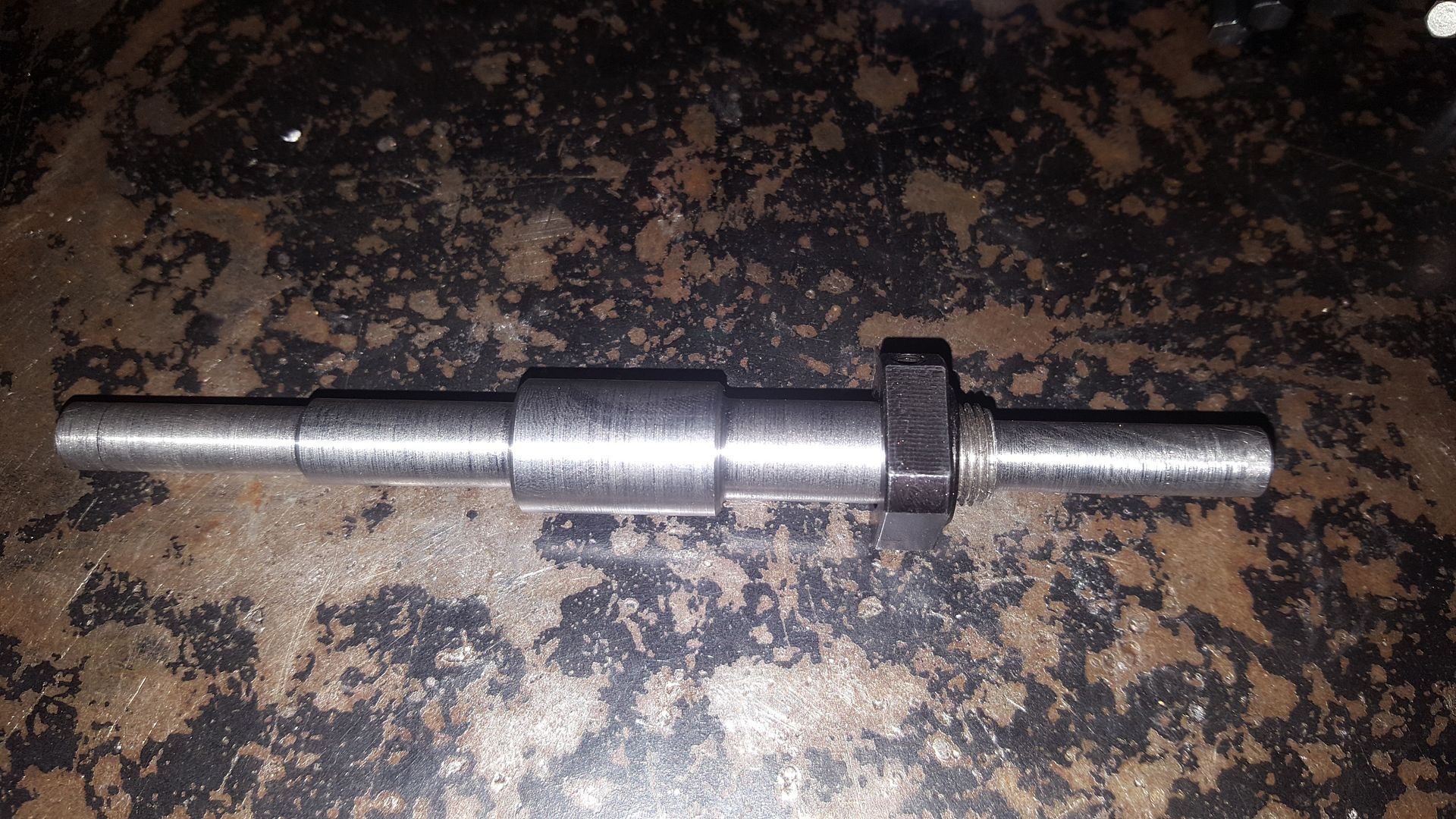Hi,
I've been cutting threads on a lathe for years in a rough and ready way. I keep removing metal until a nut will just about go on and finish the job with a die nut. I needed to cut an m8x1.25 thread today and decided to calculate the infeed required on the compound slide and do the whole job on the lathe.
Initially I assumed the thread would take the form of an equilateral triangle with the base dimension being the pitch. The result I got was way off so I've been looking at the actual metric ISO thread form (see the photo).
I'm a bit confused now. In the past, if I wanted an m8 thread I would have started with an 8mm diameter rod.
From the look of the ISO thread form, it looks like the distance H can be calculated to be the pitch/2Tan30 = 0.866 x pitch. For a 1.25mm pitch, this works out to be 1.08mm.
The crest of the thread however is shown to be H/8 below the apex which again, for a 1.25mm pitch works out to be 0.14mm.
My question is - If I want to cut an m8 x 1.25 thread, should I start with a rod of 8.0mm diameter, or should I start with a rod of 8 - (2 x 0.14) = 7.72mm?
Thanks,
Alan C.

I've been cutting threads on a lathe for years in a rough and ready way. I keep removing metal until a nut will just about go on and finish the job with a die nut. I needed to cut an m8x1.25 thread today and decided to calculate the infeed required on the compound slide and do the whole job on the lathe.
Initially I assumed the thread would take the form of an equilateral triangle with the base dimension being the pitch. The result I got was way off so I've been looking at the actual metric ISO thread form (see the photo).
I'm a bit confused now. In the past, if I wanted an m8 thread I would have started with an 8mm diameter rod.
From the look of the ISO thread form, it looks like the distance H can be calculated to be the pitch/2Tan30 = 0.866 x pitch. For a 1.25mm pitch, this works out to be 1.08mm.
The crest of the thread however is shown to be H/8 below the apex which again, for a 1.25mm pitch works out to be 0.14mm.
My question is - If I want to cut an m8 x 1.25 thread, should I start with a rod of 8.0mm diameter, or should I start with a rod of 8 - (2 x 0.14) = 7.72mm?
Thanks,
Alan C.











